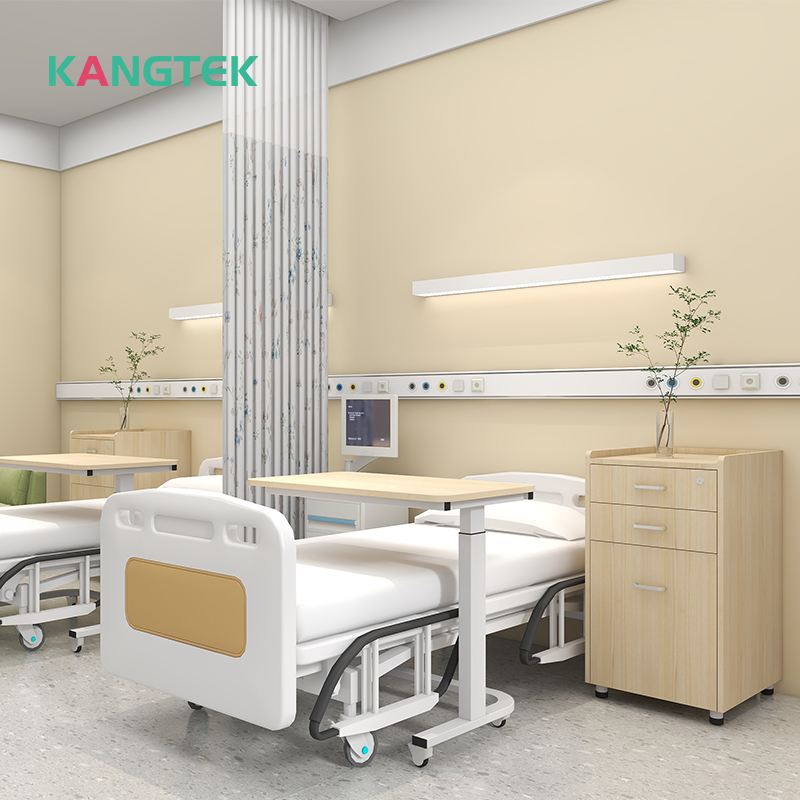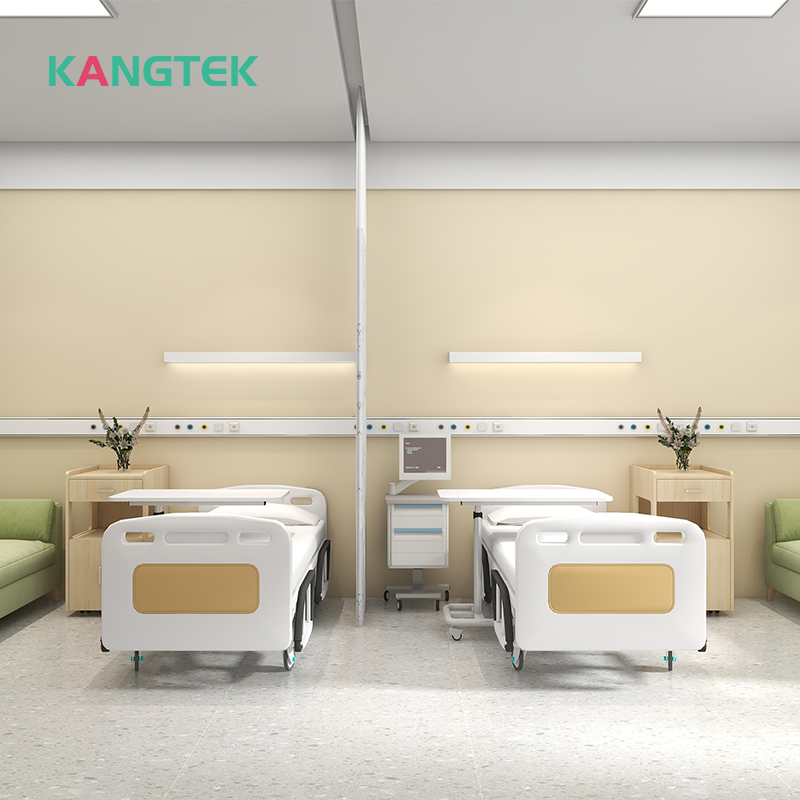Ensuring that customized bedside cabinets meet the standards of medical environments can be achieved by following these key steps:

1. Aesthetic Design and Coordination: The design of the bedside cabinet should be simple, practical, and aesthetically pleasing, and coordinate with the overall style of the hospital ward. The color should be light, such as white, beige, etc., to increase the overall brightness of the ward.
2. Appropriate Size: The size of the bedside cabinet should be moderate, with a height generally between 70-80 cm, a width generally between 40-50 cm, and a depth generally between 30-40 cm, to facilitate placement next to the hospital bed without occupying too much space.
3. Material Selection: The material of the bedside cabinet should have characteristics such as waterproof, fire-resistant, and corrosion-resistant to ensure its safety and durability during use. Commonly used materials include iron, stainless steel, solid wood panels, etc., which are easy to clean and disinfect.
4. Functional Configuration: The bedside cabinet should be equipped with storage spaces such as drawers, cabinet doors, and open storage shelves to facilitate patients in storing personal items, medication, food, etc. The opening and closing of drawers and cabinet doors should be smooth and not stuck, making it convenient for patients and medical staff to use.
5. Safety Design: The edges and corners of the bedside cabinet need to be treated to avoid causing harm to patients or caregivers with sharp angles or corners. In addition, the bedside cabinet should have an anti-tipping design to ensure stability and reliability during use, preventing harm to patients due to accidental tipping.
6. Load-bearing Capacity: The bedside cabinet needs to have a certain load-bearing capacity to safely carry various medical supplies and equipment.
7. Easy to Clean: The surface of the bedside cabinet should be smooth and seamless, making it easy to clean and disinfect, preventing the breeding of bacteria.
8. Antimicrobial and Anti-corrosion Performance: The bedside cabinet should consider antimicrobial, anti-corrosion, and easy-to-clean characteristics to enhance the hygiene and safety of medical institutions.
9. Compliance Check: Ensure that the design and production of the bedside cabinet comply with relevant medical industry standards and regulations, such as HTM2022, NFPA, ISO01197, and EN793 standards.
10. Customization Service: Choose manufacturers that provide personalized customization services to design bedside cabinets that meet specific purposes according to specific needs.

By following the above steps, it can be ensured that the customized bedside cabinets not only meet the functional needs of the medical environment but also comply with safety and hygiene standards.

